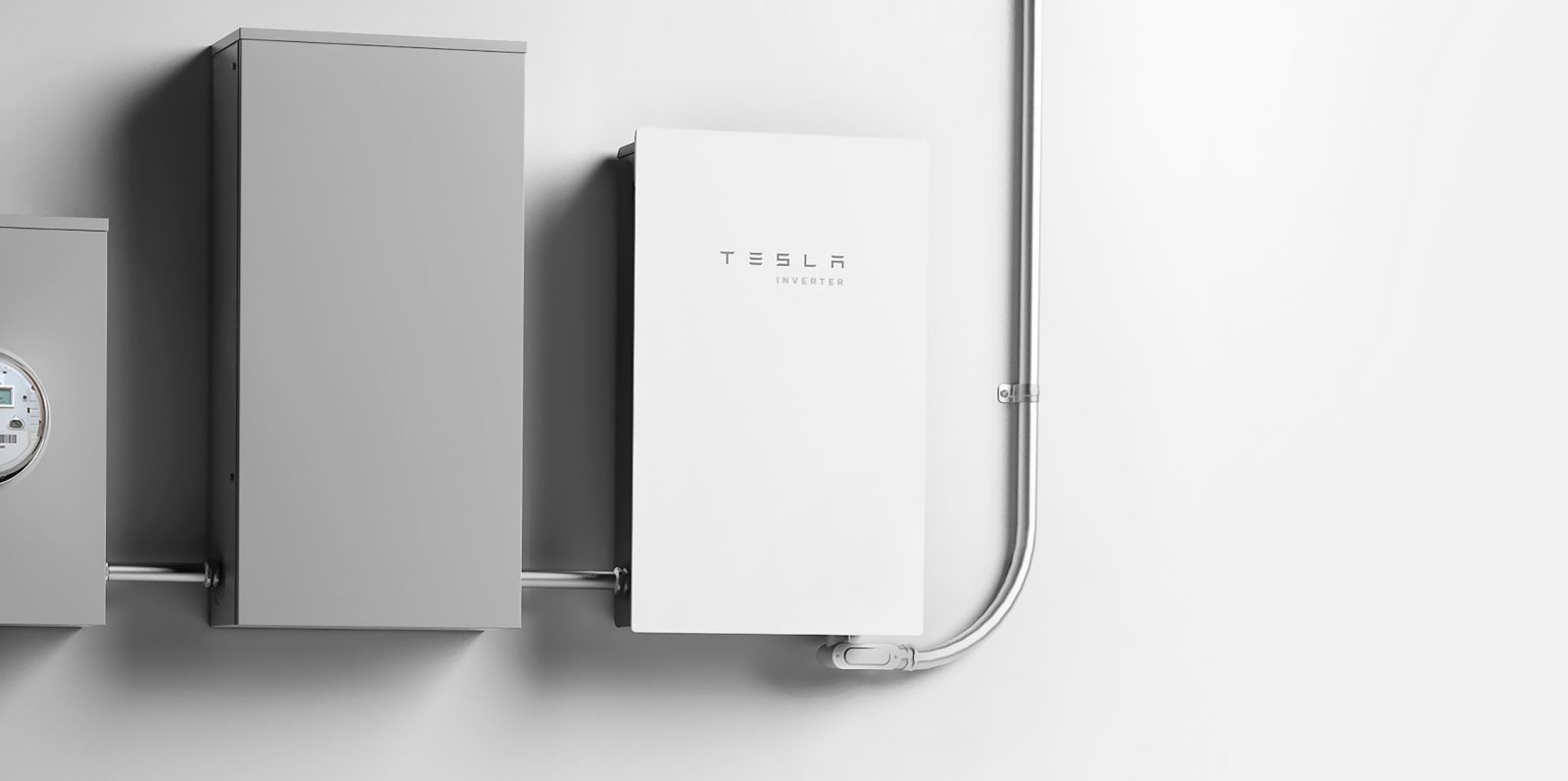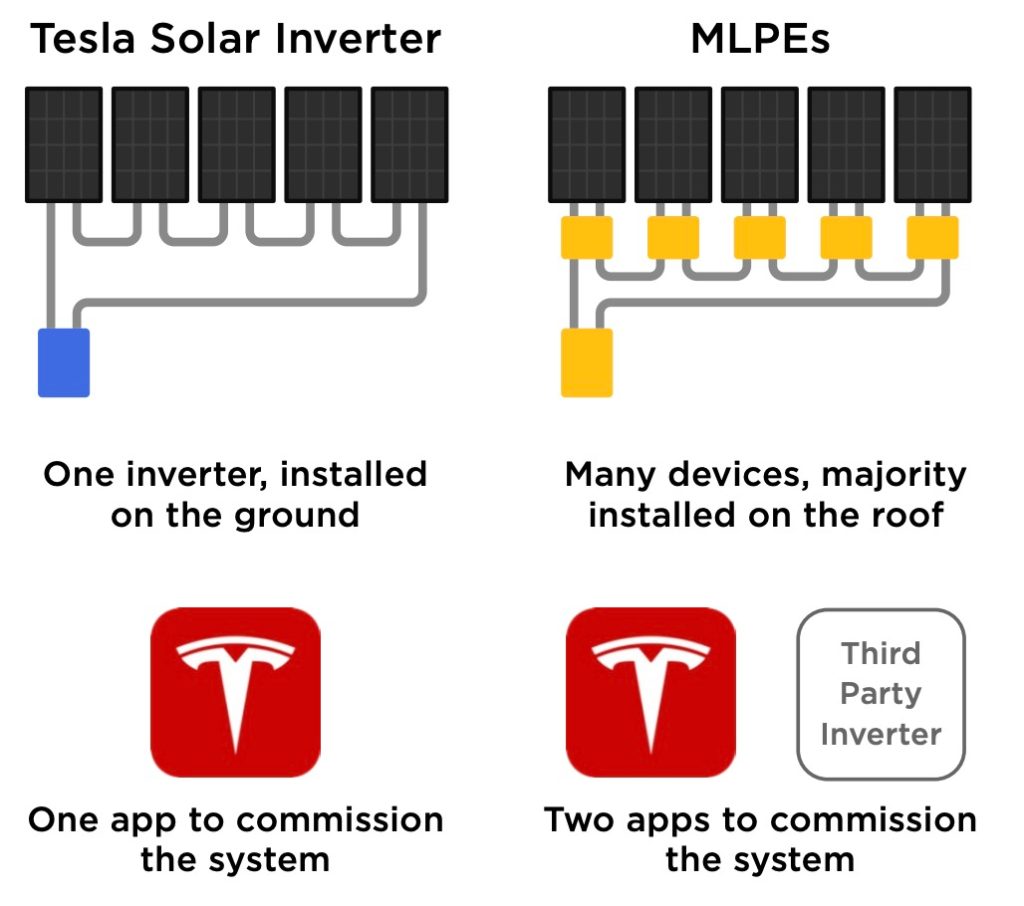
Tesla released a white paper on its new string solar inverter and claims that it is much cheaper than competing inverter solutions from Enphase and SolarEdge.
In 2021, Tesla launched its own solar inverter for the first time.
Over the last few years, the company has started to integrate it increasingly into its own solar installations, and it also supplies it to other solar installers through its certified installer program.
Electrek has now obtained a white paper about its solar inverter that Tesla has been sharing around.
Tesla explained in the white paper’s summary:
Tesla’s mission is to accelerate the world’s transition to sustainable energy. To speed up the adoption of solar and storage in the residential energy sector, we’ve focused on providing products specifically designed for both the system owner and the installer. To develop the Tesla Solar Inverter, we leveraged our deep industry experience to design an inverter that offered the best value for system owners, while being easy to install, maintain, and service.
Tesla’s main claim in the paper is that its string inverter solution is cheaper at the purchase and through the Levelized Cost of Energy (LCOE).

In the paper, Tesla admits that its solution results in a lower production by about 1 or 2%:
We then assessed the real-world performance data of these sites to characterize the effects of inverter type on the system’s output. We compared actual system performance data of sites with different inverter types but similar SES, ensuring only similar roofs were compared. For the homes that are good for solar (SES 6-10), sites that used optimizers saw energy production gains of 1-2% compared to homes that used Tesla Solar Inverters. When comparing the cost of Tesla Solar Inverter with MLPEs, it begged the question whether the production gains were worth the increased cost of the MLPEs.
The leading solar inverter company using optimizers is SolarEdge, which Tesla mentions in the white paper and appears to compare its solution to in this case.
Electrek contacted SolarEdge for a comment on the comparison, and we will update if we get an answer.
In the paper, Tesla claims that the trade-off for the lower output was worth it since its analysis resulted in a 6% lower Levelized Cost of Energy (LCOE):
To answer this question, an LCOE analysis was performed to compare two 8 kW solar systems4. In the base-case scenario, our analysis found that the Tesla system had a 6% lower LCOE for the most common SES5. We also found that, for 93% of sites in the sample, Tesla had a lower LCOE. The difference in LCOE is driven entirely by higher inverter equipment costs. Further, the gap between LCOEs for SES 8 roofs expands to approximately 15% after factoring in the potential failures of optimizers during the service life6. These findings prove that over the system’s lifetime, the Tesla Solar Inverter will provide energy at a better value for most customers.
Tesla also claims that its string solar inverter results in benefits for installers in terms of ease of installation and site design process.

Here’s the full white paper:
Electrek’s Take
The white paper reads more like a sale brochure than a scientific paper, but it doesn’t mean that the data is inaccurate.
I also found it interesting that the white paper also focused on the “Tesla ecosystem”:
For the customer, Tesla Solar Inverter completes their Tesla ecosystem. System owners use a single app to monitor and manage their entire home energy system. Instead of sorting through multiple apps to make sure all devices are working properly, the Tesla app displays all Tesla products, including solar, Tesla vehicles, and charging. The intuitive app experience allows the customer to view and manage home energy usage across these devices, with the system optimizing for savings and efficiency. As new features are developed, they are automatically made available in the Tesla app, ensuring customers can unlock the full potential of their home energy system.
We have been seeing a shift in Tesla’s solar business lately where the company appears to be focusing more on providing its ecosystem supported mainly by the Powerwall, and now, the solar inverter.
I think eventually that might be Tesla’s primary approach to achieving scale with its new Tesla Electric business.
If you find yourself in this situation or even just want to check out other options to make sure you’re finding a trusted, reliable solar installer near you that offers competitive pricing, check out EnergySage. EnergySage is a free service that makes it easy for you to go solar – whether you’re a homeowner or renter. They have hundreds of pre-vetted solar installers competing for your business, ensuring you get high quality solutions and save 20 to 30% compared to going it alone. Plus, it’s free to use and you won’t get sales calls until you select an installer and tell us to share your phone number with them.
Your personalized solar quotes are easy to compare online and you’ll get access to unbiased Energy Advisors to help you every step of the way. Get started here.
FTC: We use income earning auto affiliate links. More.